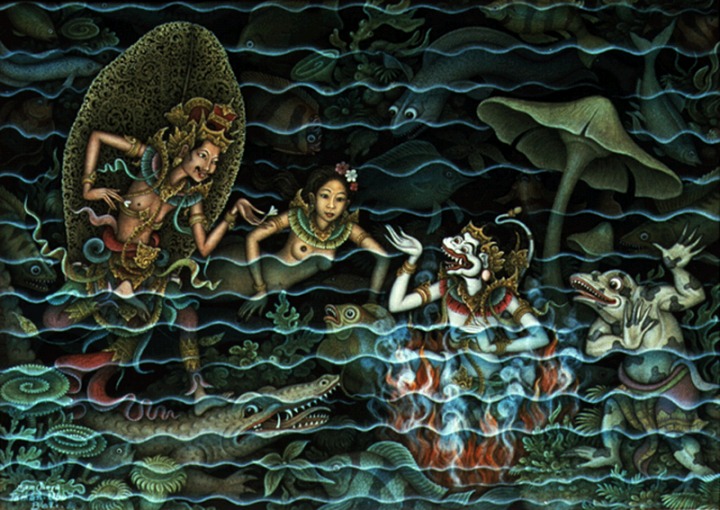Balinese Painting
Deities in Village Life
Found within majority Muslim Indonesia, the indigenous beliefs in deities and ancestor worship of Bali received in addition the Hindu religion from India, giving rise to a unique Balinese Hinduism. Coming under Dutch colonial control in the 19th century, Balinese painting took a new form with the influences arriving from the West. Triggering part of this change was the German painter and musicologist Walter Spies (1895–1942). Spies was prominent among artists forming the Pita Maha painters’ group in Ubud with Balinese artist I Gusti Nyoman Sudara Lempad (1862–1978) in 1936. Aiming at raising the artistic level of art directed at the tourist market, the group arranged periodic meetings in which many painters and sculptors from nearby villages participated. From then on, though Ubud remained at the center of artistic activity, other villages such as Batuan and Sanur developed their own styles. In recent years, artists with a more individual and humorous take on the Bali scene, such as I Dewa Putu Mokoh (1934–2010), have gained attention.
[Nakao Tomomichi]

Nyoman Meja "Ramayana" 1984 acrylic on cloth

I Dewa Putu Mokoh "Ritual for a Three-Month-Old" 1992 acrylic on canvas
